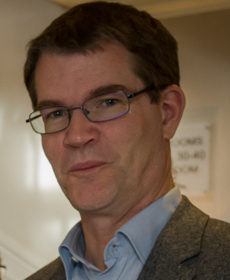A word from the EP Deputy Department Head - June 2025

As I write this editorial, the 2025 experimental programme is in full swing, and the high temperatures are a reminder that summer is here. Many of you will be extremely busy with the ongoing data-taking, producing new results for the summer physics conferences, or preparing LHC detector upgrades or other future projects. Amongst all these activities, I hope you will find time to read this latest issue of the EP Newsletter, which is full of interesting articles showcasing some of the recent activities in the department and beyond.
The Run-2 LHC data sample recorded in 2015-2018 is by now very well scrutinised, but continues to yield surprises and fresh physics insights. In this issue, ATLAS reports evidence for the production of longitudinally polarised same-sign W bosons, a signature that, within the Standard Model, is deeply connected with the Higgs mechanism. Meanwhile in CMS, careful study of the production of top quark-antiquark pairs just above the kinematic production threshold has shown an intriguing excess that may hint at the production of `toponium’, a quasi-bound state of a top quark and top antiquark. A fascinating article from ALICE explains how lead-ion collisions in the LHC actually produce a minute quantity of gold, realizing the ancient alchemists’ dream.
With the start of the CERN Long Shutdown 3 (LS3) now only one year away, more and more activities are now focused on preparing the LHC experiment and accelerator upgrades that will be installed to realise the HL-LHC programme. In this issue, you can learn about the new CMS control room (already in use for 2025 data-taking), and the ATLAS SR1 integration facility, where all the elements of the new ITk inner tracking detector will come together before being installed in the experimental cavern. The upgraded ATLAS and CMS detectors will both make use of new CO2-based cooling systems, whose installation is already well-advanced. All these detector upgrades rely on the contributions and expertise of the EP support groups, which is highlighted in the EP-DT annual report, and the article on versatile optical links being developed in the EP-ESE group. EP-DT is also contributing to the final upgrade of a very different detector – the AMS-02 experiment on the International Space Station, where a new tracking layer is being constructed to a very tight schedule for launch in spring 2026. Finally, the LHCb experiment is firming up its Upgrade 2 plans, through the ‘Scoping Document’ recently endorsed by the CERN Research Board.
Elsewhere in this issue, you can read about how experiments at ISOLDE are shedding light on the formation of heavy elements in extreme astrophysical events such as neutron-star mergers. And how at the AD antimatter factory, the new TELMAX beamline has opened up new opportunities for small-scale experiments to benefit from CERN’s unique antiproton facility.
Looking further ahead, you can read a report on the recent FCC Week in Vienna, which provided an opportunity to take stock and plan the next steps in this flagship future collider project. Whatever direction is chosen, experiments at future facilities will rely on groundbreaking advances in detector technologies, where CERN is making a major contribution through the EP R&D programme, showcased at the recent EP R&D workshop. In this issue, you can also read in detail about the activities in Work Package 3 on calorimetry and light-based detectors, and advances in calorimeter reconstruction software with the CLUE algorithm.
Once again, there is a wealth of information to discover in this issue of the EP newsletter, and I wish you happy reading, as well as the chance to take some well-deserved holidays over the summer period.
Read more in the presentation by Riccardo Longo (University of Illinois at Urbana-Champaign, US) delivered during the CERN EP Seminar on 16 September 2025:
Longo_CERN_Jamboree_16Sept2025_v1.4.pdf
